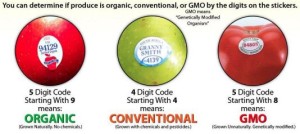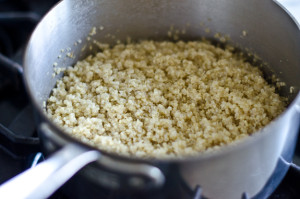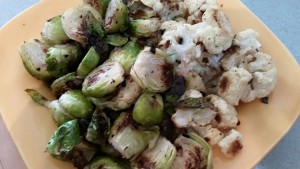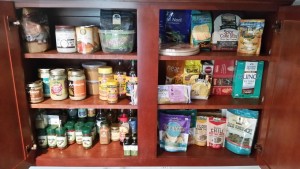GMO is not just another buzz word; it’s serious business. Someone is playing with your food before it gets to you, and I’m certainly have some feelings about that. There are a lot of arguments and politics around this subject, but for now, I’m only interested in discussing how it personally effects you and your family. So let’s first establish, what does GMO mean?
Genetically modified organisms (GMOs) can be defined as organisms in which the genetic material (DNA) has been altered in a way that does not occur naturally. Selected individual genes are transferred from one organism to another, even between non-related species. These methods are used to create genetically modified plants – which are then used to grow GM food crops.
The initial objective for developing plants based on GM organisms was to improve crop protection; introducing chemical products in the name of insect resistance, virus resistance, and herbicide tolerance.
Here’s how it goes down:
“Gene insertion into plants is done by shooting cells with a “gene gun” or using bacteria to infect the cells. Then the cells are cloned into plants. The DNA of GMOs, for example, can have hundreds or thousands of mutations, and the activity of up to 5% of their natural genes can be significantly changed. Even the inserted gene can be damaged or rearranged, creating proteins that trigger allergies or promote disease.”
The list of studied health effects for GMO is long, and still new. What we find out over the long term has yet to be seen. For now, here is a short list of health risks associated with these foods:
Reduced digestive enzymes, impaired digestion
Reproductive problems, fertility problems
Decreased immune function
Accelerated aging
Increased, uncontrollable allergy symptoms
GMO food companies created a false perceived advantage that translated to the consumer as lower prices and/or greater benefit (more durable/increased nutritional value). Recent studies are showing this to be false. The truth is, you get what you pay for.
So now what? Where do we go from here? How do we know what is what? The best place to start – awareness. Spread the word! Most people don’t realize that there are GM ingredients in an estimated 70% or more of all processed food. Here are a few tips to keep you a step ahead:
~Eat Freshitarian! Buy and consume whole, organic foods. Prepare simple, delicious meals for yourself. Inflate your imagination and maximize nutritional benefits.
~The major GMO crops are soy, corn, canola, cotton, sugar beets, rice, and alfalfa. Each has added bacterial genes, allowing plants to survive a deadly dose of weed killer, like Roundup; avoid them. Also, Hawaiian papaya and a small amount of zucchini and yellow crookneck squash are engineered to resist a plant virus, so watch those labels… Which brings me to my next tip!
~Know the secret produce codes! If it’s a 4-digit number, the food is conventionally produced. If it is a 5-digit number beginning with an 8, it is GM. However, do not trust that GM items will have a PLU identifying it as such, because labeling is optional – for now. If it is a 5-digit number beginning with a 9, it’s organic. There is a pop quiz on this later… Squeal! Just kidding!
~If you must purchase a labeled product, be sure the label says 100% organic. Also, just because something says “organic” on it does not mean that it doesn’t contain GMs. In fact, it can still contain up to 30% GMs, so be sure the labels say organic.
~And finally, shop local. While more than half of all GM foods are produced in the US, most of it comes from big time, industrial farms. This Saturday, visit your local market and talk to the farmer. Ask them about their farming practices and feelings about GM foods.
Remember, eating fruits and vegetables is what’s really important. So if organic or local farmers markets are not available to you, just do the best you can. Always clean and trim all your produce, get lots of exercise, and plenty of rest. Healthy is the new skinny! Oink!












